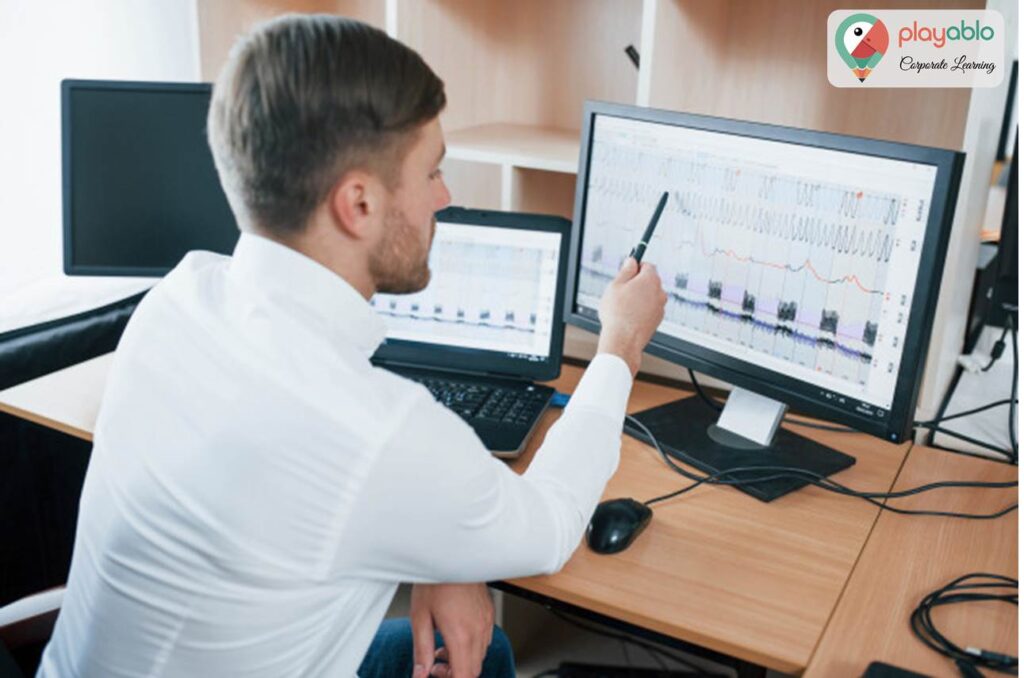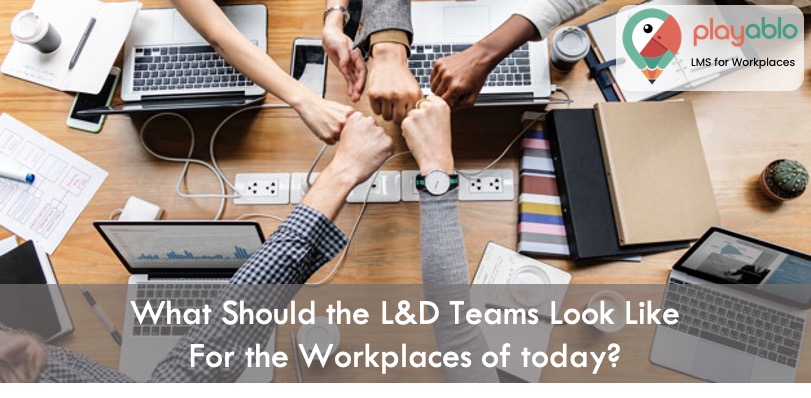Today’s workplace learning team structures need to be a mix of the right people powered with the correct data. With the evolution of learning and development, the roles of the concerned teams are also changing. Leaders need to be equipped with the requisite skills and competencies to tackle these new responsibilities.
To understand how the modern L&D teams should be structured, you should also know what companies are looking for in their hires. Additionally, you must understand what experienced practitioners feel the L&D role represents to them.
While some L&D experts want the team to know the organization and its ecosystem, others desire their members to share a strong interest in learning. On the other hand, digital ability is another vital requirement. Let us explore these aspects in more detail.
Table of Contents
How Are L&D Teams Structured?

A close look at the L&D job market reveals that a majority of recruiters seek the right mindset and soft skills in their hires—for instance, proactivity and creativity. Again, L&D practitioners should be able to measure their contribution and impact. In the hard skills category, the most in-demand qualities are project management and analytics.
These diverse hiring needs mean that L&D people must be capable of both leading projects and using data-based analysis to report on their progress. Several companies additionally are prone to recruiting people with an HR background for their L&D organization structure. Currently, L&D professionals are expected to be more digital-savvy than the job offers studied previously would suggest.
Read More: New to L&D Department? Here is How to Chart Your Career in Workplace Learning!
Changing Learning and Development Team Structures
Earlier, the common belief was that workplace learning teams should comprise content creators and program managers. But now, they are the engineers of a learning ecosystem. To sustain this ecosystem, the L&D teams are responsible for the development of the workforce.
Hence, they must turn into change drivers. They must also be inclined to make a significant effort in terms of accountability. These changes in the function have altered the traditional L&D competencies. Therefore, companies need to think carefully about the skilling of L&D team structures.
What Are the 3 Pillars of Successful Workplace Learning Teams?
Having diverse profiles in L&D teams is essential. The ideal recipe for a successful learning and development department is a mix of — people with a data analyst or UX development background, people with psychology and behavior knowledge, and people coming from the business.
Read More: Learning Calendar | Why Your Workplace Needs it!
1. Business Profiles
People who come from business and customer-facing backgrounds have a better understanding of business needs. They can better convert their knowledge into L&D policies. They also have the know-how of conversing with leaders, gauging their technical language, and understanding the subcultures within the organization.
2. Data Analysts and Software Developers

These profiles enable you to reap the benefits of data analysis. Proper analytics allow you to support the workplace learning team’s accountability in the company. How? By measuring the performance and impacts of training programs via data crunching and analysis. UX and software developers also lend their expertise to User Experience (UE) and User-friendly platforms.
As a result, they can develop ideas and methods to boost Learners’ Experience (LX). As explained by David Hindley, former HRD for Danone and Disney: “An L&D function with great standards on EX (employee experience) is scarce on the market, even if it is an important part of its impacts. It is very needed.”
Read More: What is a Learning Experience Platform (LXP)?
Ad: PlayAblo’s Enterprise-Grade Micro-Learning platform is for the modern corporate learner. Moreover, micro-Learning, along with assessments and gamification features, ensures learning outcome measurement along with sustained engagement.
Find out more and request a custom demo!
3. Psychologists
Psychologists’ profiles or people with social sciences backgrounds have a proper understanding of human behaviors and learning processes at the individual scale. Such professionals can quickly gauge what triggers one can use to boost individuals’ learning curves and knowledge acquisition.
You can offer them coaching sessions and help them with learning frameworks and co-development processes to better understand the organization’s culture, mindset, and behaviors. Psychologists additionally ensure that their L&D team’s content is pedagogically perfect and reliable. In a workplace learning team structure, they are the ones who will support people’s development and help bridge the individuals’ goals with those of the company.
What Are the New Roles Workplace Learning Team Structures?
Apart from the changing roles in the current environment, L&D competencies will evolve soon as well. For instance, currently, companies are focussing on an employee’s experience in a learning situation. However, they also seek people with a background in UX development. This combo might induce the creation of the profile called:
Employee Learning Experience Designer
These professionals interpret the knowledge to be acquired into enhanced learning experiences. They perfectly know the various learning processes and platforms (digital or offline) to optimize learning and even design these themselves.
Data Analyst + Performance Consultant

This is a job profile that will have a massive impact on the L&D function. Such a profile must have dual abilities. One is to analyze business intelligence data and L&D data. They should then combine the numbers to report on the impacts of the workplace learning team’s activities on business leaders.
In short, the contemporary workplace learning team structure comprises the architects of a system that promotes the learning mindset. What does this imply? The management must get involved so that the structure is sustainable.
Keeping this in mind, the role of the Community Engagement Manager will ensure that L&D teams take responsibility for ensuring the sustainability of the learning community in the company. Second, there must be a continual evolution in the content, communications, and new learning experiences, among others — so that employees are constantly engaged.
Read More: 7 Habits of Highly Effective Chief Learning Officers
Rounding it Up
The new L&D organization structure does not mean that the existing, traditional roles will vanish. But it implies that the in-demand skill sets will evolve. To adhere to these evolutionary needs, organizations should commit themselves to developing and acquiring the L&D mindset as discussed above. In a nutshell, expertise in organizational development, change management, systemic thinking, and digital upskilling will be the main elements to create a successful L&D team. Want to know more? You can have a word with our experts at PlayAblo. We are just a call away!
Ad: PlayAblo’s Enterprise-Grade Micro-Learning platform is for the modern corporate learner. Moreover, micro-learning, along with assessments and gamification features, ensures learning outcome measurement along with sustained engagement.
Find out more and request a custom demo!






